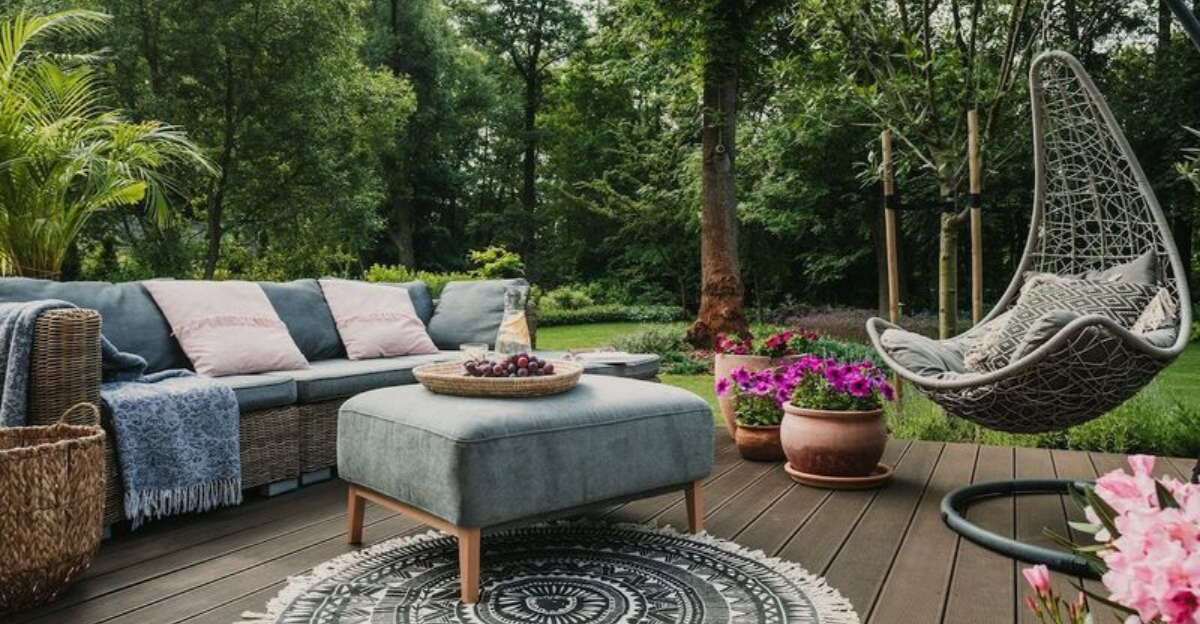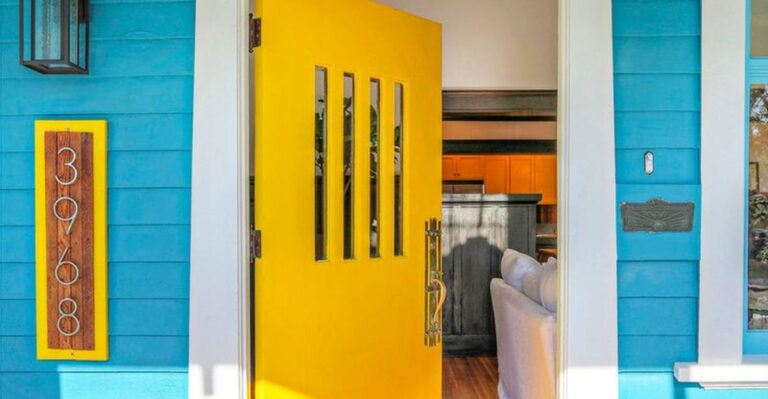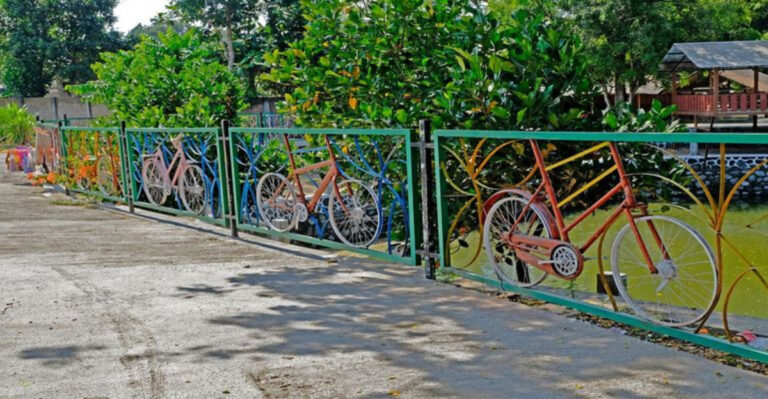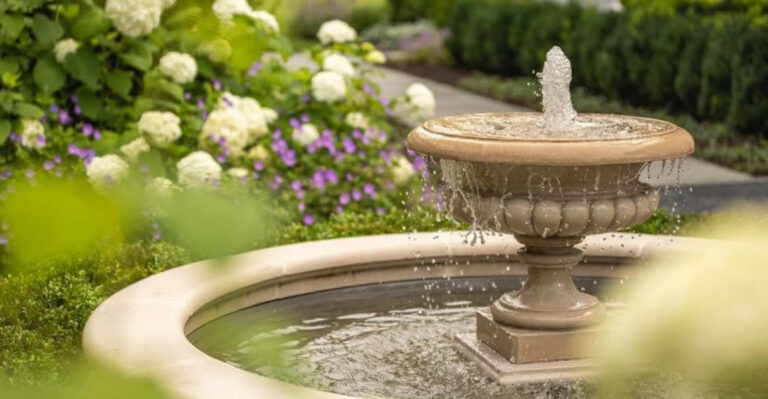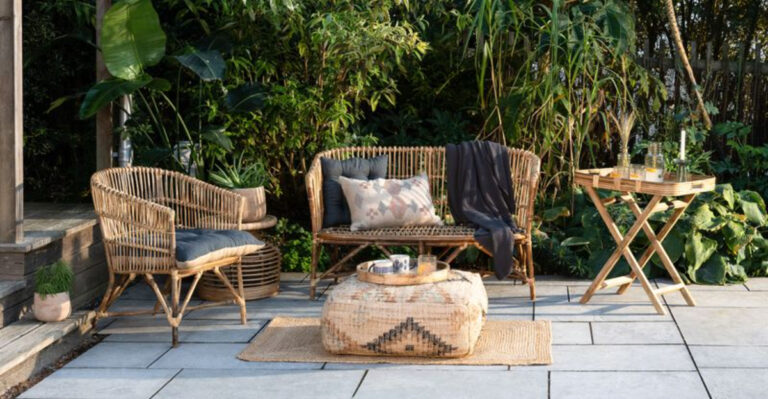Here Are 8 Things I would Never Have In My Backyard As An Interior Decorator (Plus 8 Things I Would Include Instead)
Creating the perfect backyard can feel like one of those projects that should be simple, yet somehow ends up driving you crazy.
After years of helping friends and clients tackle their outdoor spaces, I’ve seen the same missteps pop up again and again. Trust me, some ideas that look dreamy in magazines turn into constant maintenance headaches in real life.
I’ve learned a lot the hard way, and now I always share one truth up front: it’s about what works for you, not what looks good in a photo.
1. Fake Grass
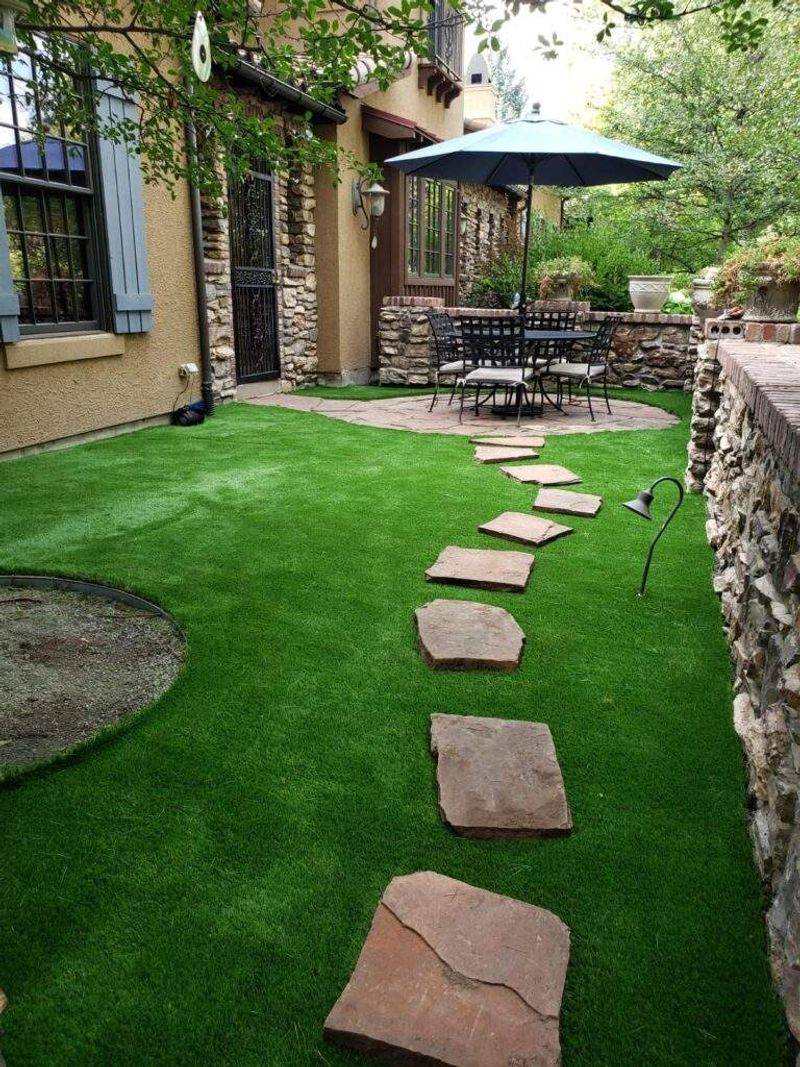
Artificial turf might seem like the perfect solution for a low-maintenance lawn, but trust me on this one. The stuff heats up like a frying pan in summer, making barefoot walks impossible.
Kids can’t roll around on it comfortably, and pets often refuse to use it. Plus, it looks obviously fake once you get close enough to notice the plastic shine.
Save yourself the regret and stick with real grass or ground cover alternatives that actually feel natural underfoot.
2. Giant Trampolines

Sure, trampolines bring joy to kids, but they’re space hogs that eat up your entire yard. Most families use them for about six months before they become expensive clothes drying racks.
Weather beats them up quickly, and the safety nets always seem to tear at the worst possible moment. Maintenance becomes a bigger headache than you’d expect.
Consider how much outdoor living space you’re actually sacrificing for something that might collect dust after the novelty wears off.
3. Cheap Plastic Furniture
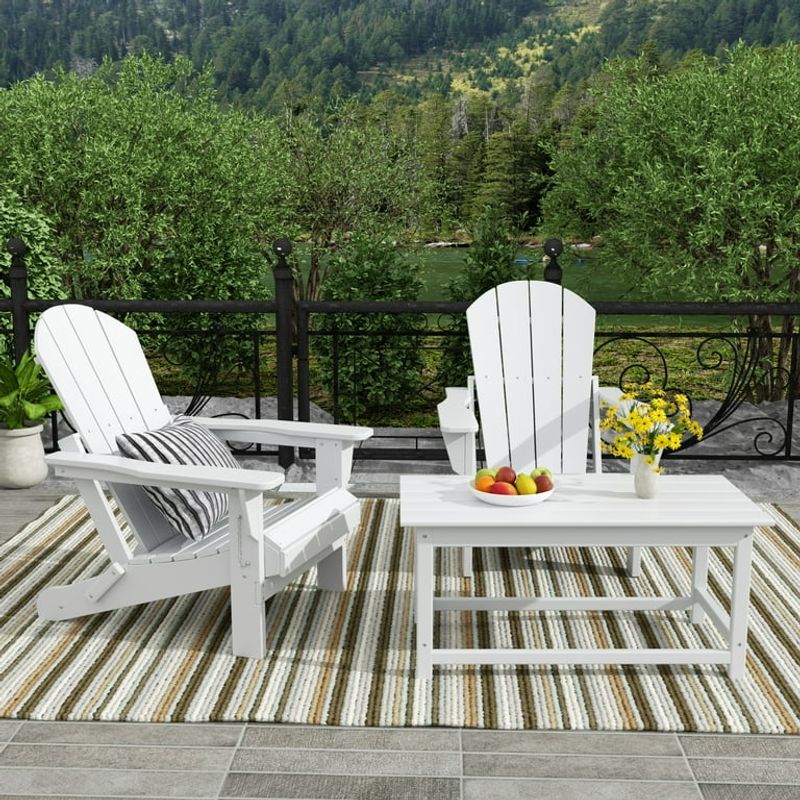
Plastic patio furniture seems budget-friendly until you’re replacing it every season. Wind turns lightweight chairs into projectiles, and sun makes everything brittle and gross looking.
Nobody wants to sit on furniture that might crack under them during a dinner party. The stuff also stains easily and never quite comes clean again.
Invest in pieces that can handle weather changes without looking like they belong in a landfill after one summer of use.
4. Above Ground Pools Without Planning
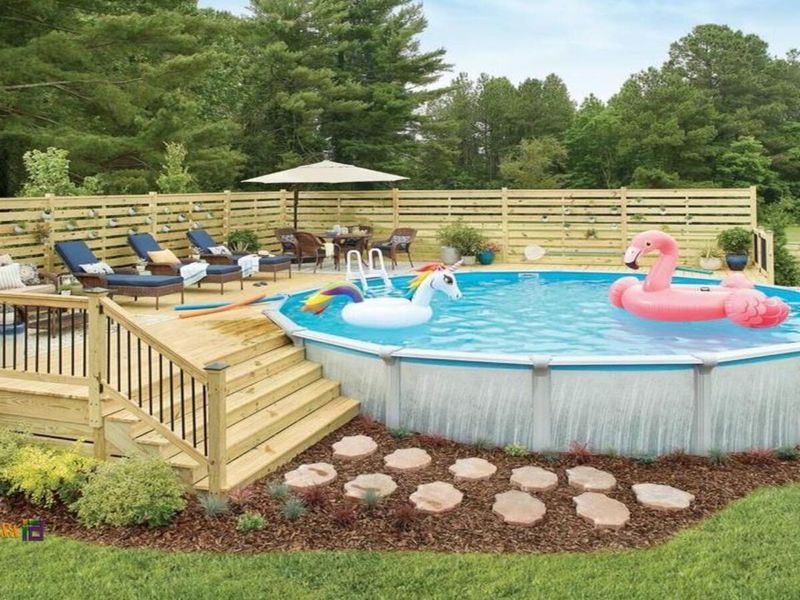
Above ground pools can work beautifully, but only when properly planned and integrated into your landscape design. Too many people just plop them down wherever they fit.
Without proper surroundings, they stick out like sore thumbs and make your yard look unfinished. The area around them often becomes a muddy mess without proper drainage.
Think about sight lines, access paths, and how the pool fits into your overall outdoor living plan before making this major commitment.
5. Concrete Everywhere Instead Of Softscape

All concrete and no plants makes for a backyard that feels more like a parking lot than a retreat. Hard surfaces reflect heat and create uncomfortable microclimates.
Rain has nowhere to go, leading to flooding and runoff problems that your neighbors won’t appreciate. The space feels cold and unwelcoming without any natural elements to soften the edges.
Balance is key when planning hardscape elements. Your outdoor space should invite people to linger, not make them want to rush back inside.
6. Decorative Rocks That Become Weed Magnets
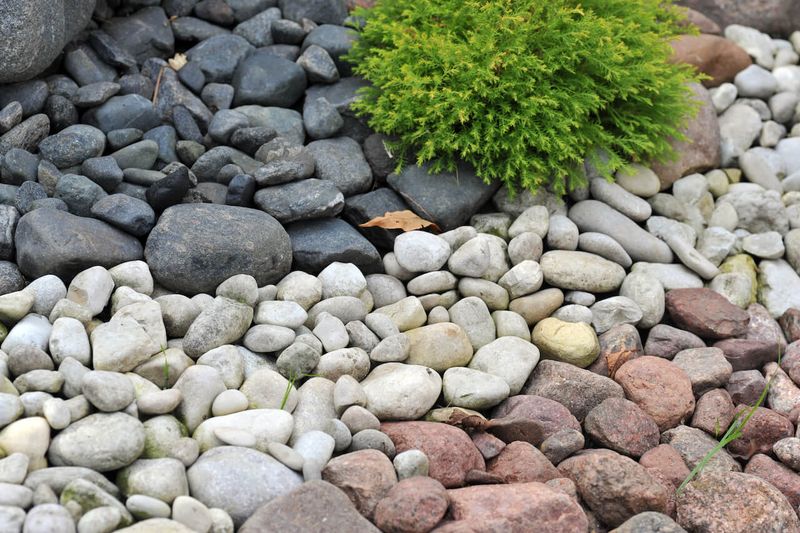
Decorative rock beds look clean and modern initially, but they become maintenance nightmares faster than you’d believe. Weeds find their way through no matter how much fabric you lay down.
Leaves and debris get trapped between rocks, creating messy pockets that are impossible to clean properly. The rocks also retain heat, making nearby plants struggle during hot weather.
What starts as a low-maintenance solution often requires more work than traditional planted beds would have needed in the first place.
7. Fire Pits Placed In Wrong Spots
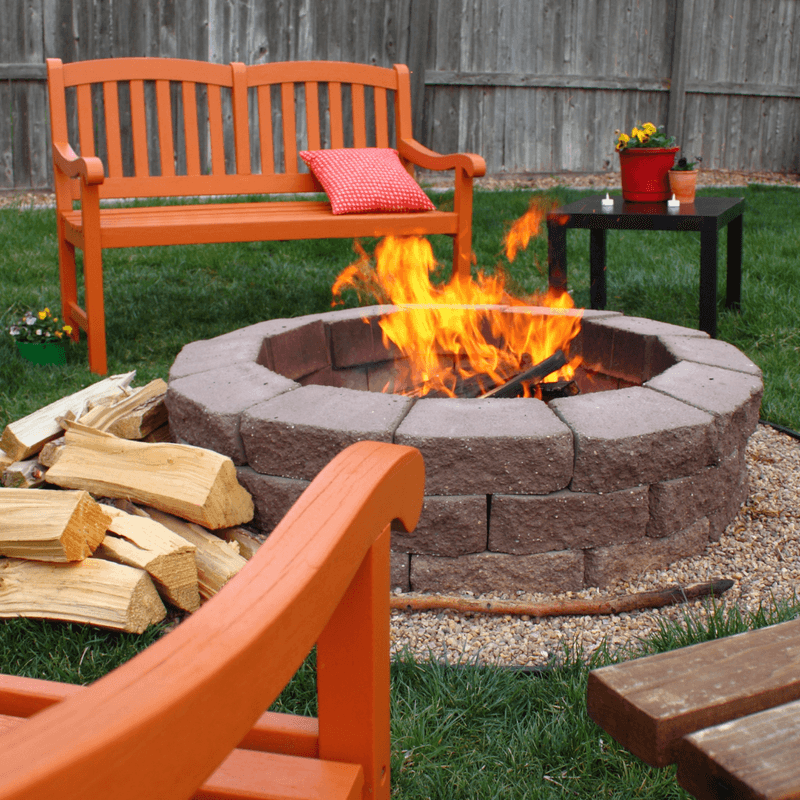
Fire pits create amazing gathering spots, but location makes or breaks the experience. Too close to the house means smoke drives everyone inside when wind shifts.
Placing them under trees or near fences creates serious safety hazards that insurance companies don’t love. Poor positioning also means uncomfortable seating arrangements where half your guests get smoked out.
Consider prevailing winds, safety clearances, and how people will actually use the space before committing to a permanent location for your fire feature.
8. Outdoor Kitchens

Outdoor kitchens sound fantastic until you realize how much work they require to maintain. Weather beats up appliances faster than indoor ones, and cleaning becomes a major chore.
Most families end up using them less than expected, especially once the novelty wears off. The investment rarely pays off in actual usage hours.
Before going all out, consider starting with a quality grill and simple prep area to see how much you actually cook outside regularly.
9. Native Plants
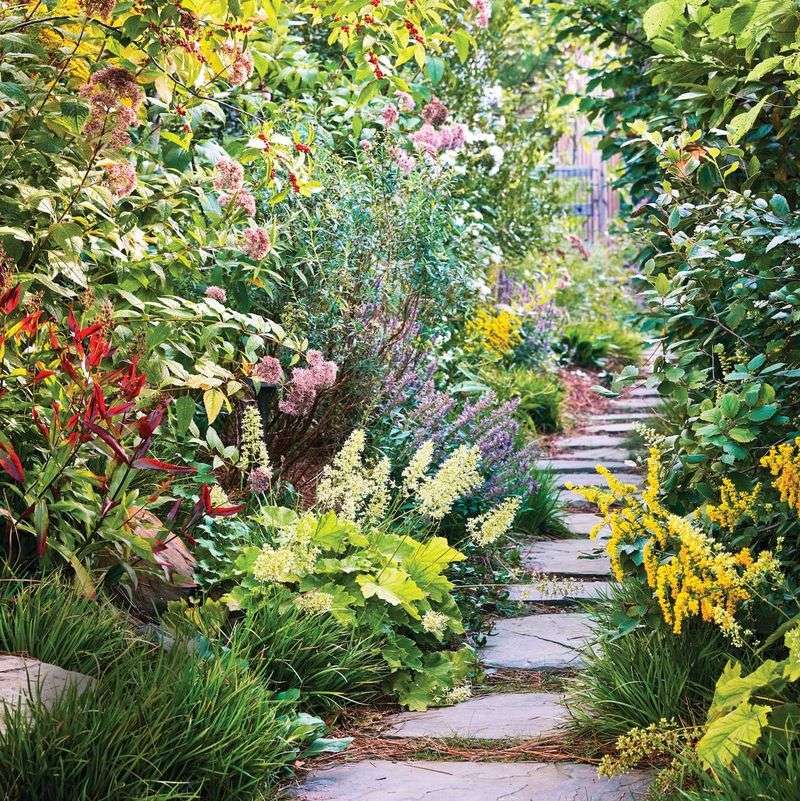
Native plants work with your local climate instead of fighting against it, which means less watering and fewer pest problems. They provide food for local wildlife while looking naturally beautiful.
These plants have evolved to handle your area’s weather patterns, so they bounce back from storms and droughts better than exotic varieties. Maintenance becomes easier when you’re working with nature rather than against it.
Research what grows naturally in your region and build your landscape around those proven performers for long-term success.
10. Comfortable Outdoor Seating Areas
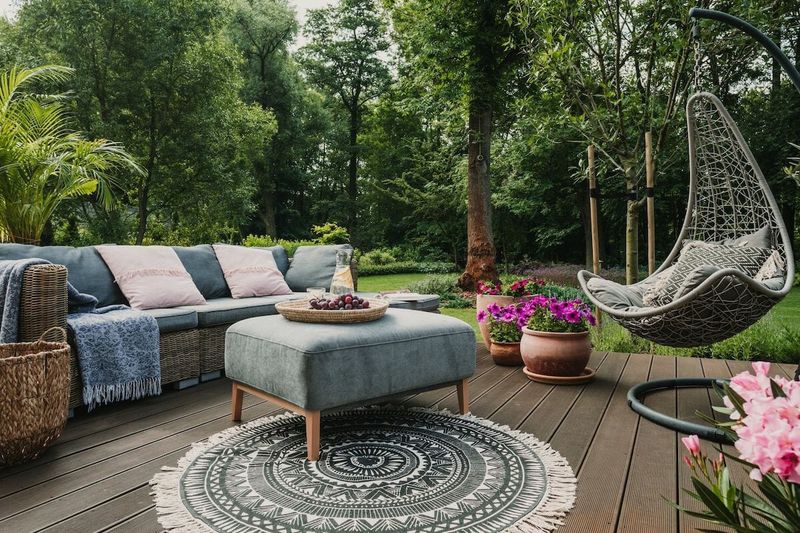
Quality outdoor furniture transforms your backyard into an extension of your living space where people actually want to spend time. Comfortable seating encourages longer conversations and relaxation.
Weather-resistant materials mean your investment lasts for years without constant replacement or storage hassles. Proper cushions and arrangement create intimate spaces for both large gatherings and quiet moments.
Think about how you want to use the space and choose pieces that support those activities while standing up to your local weather conditions.
11. Proper Outdoor Lighting

Good lighting extends your backyard’s usable hours well into the evening, making it a destination rather than just daytime space. Layered lighting creates ambiance while providing necessary safety illumination.
String lights, pathway lighting, and accent fixtures work together to highlight your landscape’s best features. Solar options reduce energy costs while providing reliable illumination where you need it most.
Plan your lighting scheme to support both entertaining and everyday activities, ensuring your outdoor space remains functional after dark.
12. Shade Structures
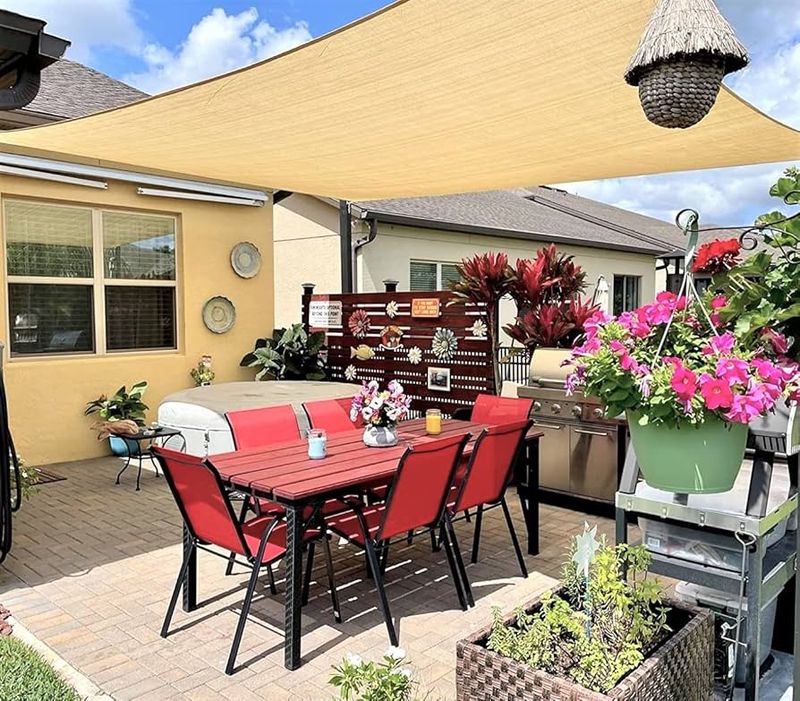
Effective shade makes your outdoor space usable during hot days when direct sun would otherwise drive everyone inside. Pergolas, shade sails, or umbrellas create comfortable microclimates.
Strategic placement provides relief during peak sun hours while maintaining open views and airflow. Quality shade structures also protect furniture from fading and weather damage.
Consider your sun patterns throughout the day and seasons to position shade elements where they’ll provide maximum benefit for your specific outdoor activities.
13. Functional Storage Solutions
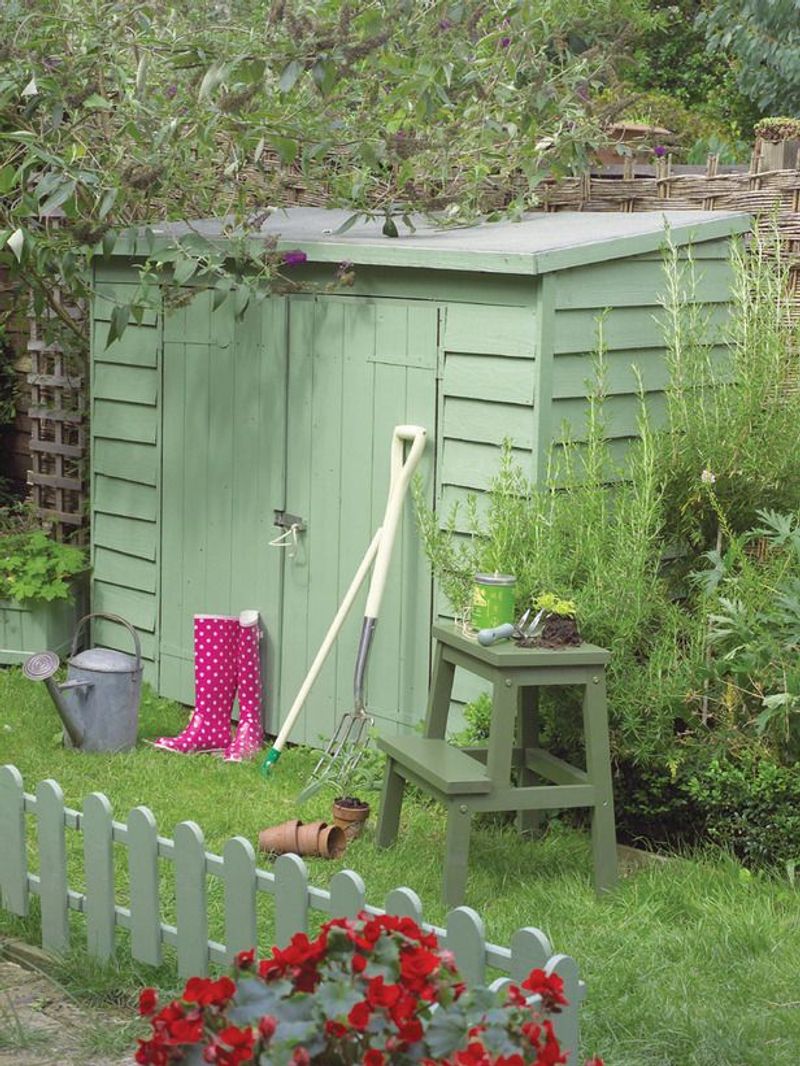
Smart storage keeps your backyard organized while protecting seasonal items from weather damage. Built-in benches with storage, weatherproof containers, and dedicated tool areas maintain clean sight lines.
Easy access to stored items encourages regular use of outdoor spaces since everything has a designated place. Attractive storage solutions blend into your design rather than creating eyesores.
Plan storage for cushions, tools, toys, and seasonal decorations so your backyard stays functional and clutter-free throughout the year.
14. Water Features
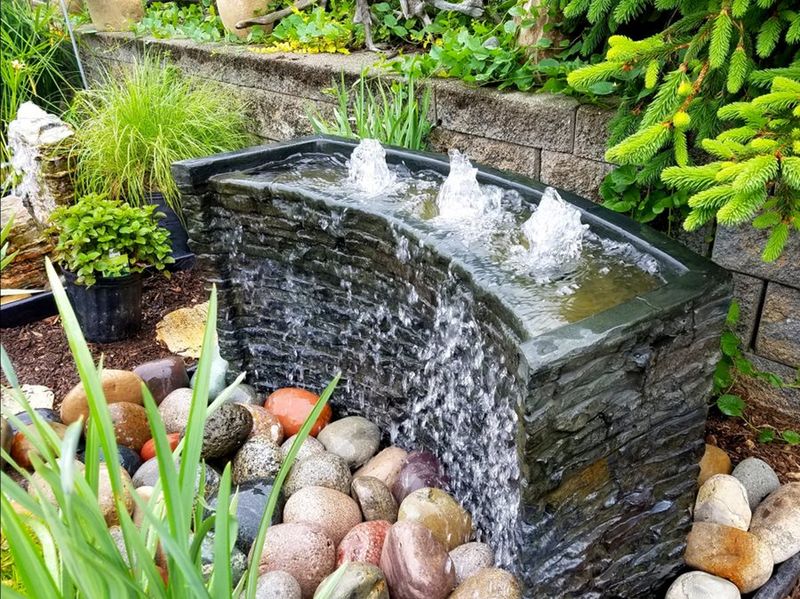
Water features add movement and sound that transform ordinary backyards into peaceful retreats. The gentle sound of flowing water masks neighborhood noise while creating focal points.
Even small fountains or water bowls provide benefits for local wildlife while adding visual interest to plant beds. Self-contained features require minimal maintenance compared to larger pond systems.
Choose water features that match your maintenance comfort level and available space, focusing on creating tranquil spots for relaxation and reflection.
15. Defined Pathways
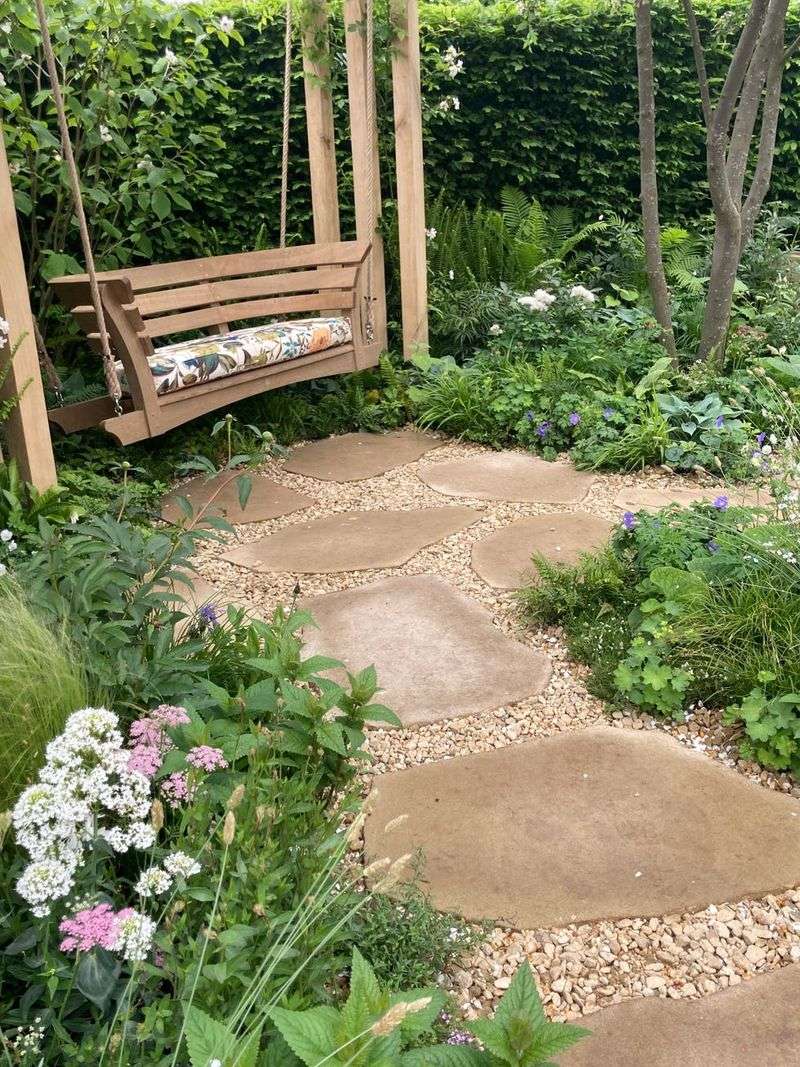
Clear pathways guide traffic flow while protecting planted areas from foot damage. Well-designed walkways connect different activity zones and create structure in larger yards.
Materials like flagstone, brick, or gravel provide stable footing while adding texture and visual interest to your landscape design. Proper pathway width accommodates comfortable walking for multiple people.
Plan routes that make sense for how you actually use your space, connecting main gathering areas with natural circulation patterns.
16. Outdoor Dining Spaces
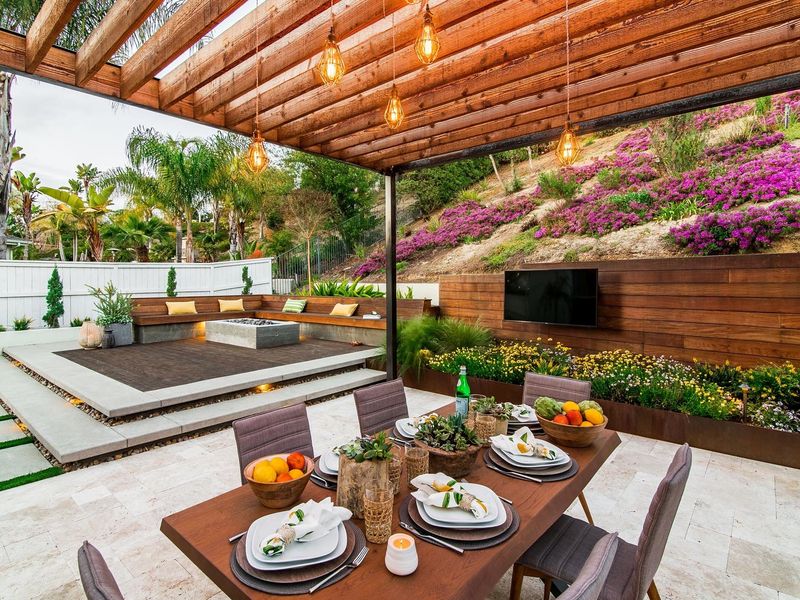
Dedicated dining areas encourage outdoor meals and entertaining while providing comfortable spaces for family gatherings. Proper table height and seating make eating outside enjoyable rather than awkward.
Weather-resistant surfaces and easy-clean materials reduce maintenance while standing up to regular use. Strategic placement considers both convenience to indoor kitchens and pleasant views.
Size your dining area for your typical guest count while ensuring enough space for comfortable movement around the table during meals and conversations.

